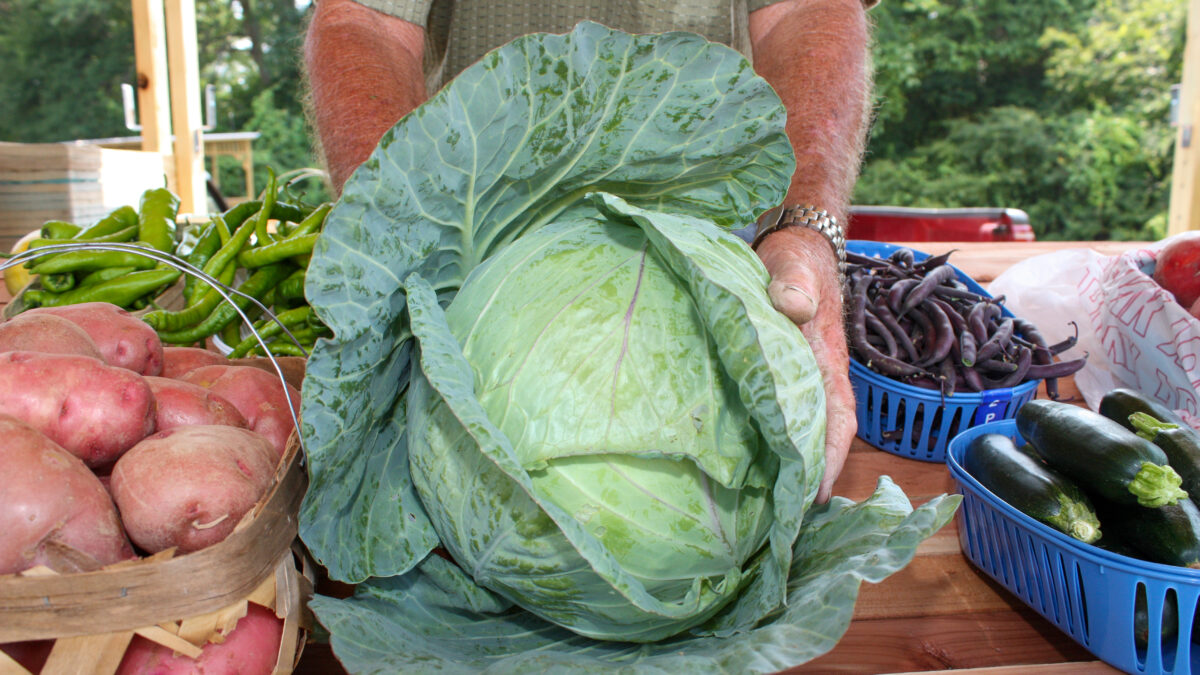Farmers Step up Efforts to Reduce Food Waste
TOPICS
Food WasteGuest Author
Special Contributor to FB.org

photo credit: Alabama Farmers Federation, Used with Permission
Guest Author
Special Contributor to FB.org
By Robert Giblin
Topics like emerging cuisines, ingredients, restaurant themes, grocery store formats and cooking techniques often dominate food trend discussions. But another trend – reducing food waste – is cutting across all segments of the food industry, from farms to processors, marketers, grocery stores, restaurants, institutional foodservice and homes.
Americans waste nearly 150,000 tons of food every day, according to a study published in April in the journal PLOS ONE. Conducted by researchers at the Agriculture Department’s Agricultural Research Service, the University of Vermont and the University of New Hampshire, the study is the first to explore links between diet quality, food waste and environmental impacts.
American consumers each waste about 1 pound of food per day. About 20 percent of all food served on the plates of Americans goes into the trash every year, in a country where one in seven people are food insecure.
Looked at another way, American consumers each waste about 1 pound of food per day. About 20 percent of all food served on the plates of Americans goes into the trash every year, in a country where one in seven people are food insecure. Consumer spending accounted for about two-thirds of the $218 billion spent annually in the U.S. to grow, process, transport and dispose of food that is never eaten. Producing wasted food required approximately 30 million acres of land, or 7 percent of all U.S. cropland, as well as 4.2 trillion gallons of irrigation water, 1.8 billion pounds of nitrogen fertilizer and 780 million pounds of pesticides.
In 2013, USDA and the Environmental Protection Agency launched the U.S. Food Waste Challenge to provide a platform to assess and disseminate information about best practices to reduce, recover and recycle food loss and waste. In 2015, the first-ever national food waste goal was announced, calling for a 50-percent reduction by 2030.
Critical first steps include reducing food waste on the farm and continuously improving practices to be more efficient and sustainable. Farmers take those roles seriously.
Last month, the American Farm Bureau Federation joined a collaborative effort – “No Taste for Waste” (NoTasteforWaste.org) – to reduce food waste and loss. The campaign provides a resource for consumers interested in reducing household food waste, while informing the public about how farmers take steps to fight food loss in their fields.
Among the Farm Bureau members leading the food waste reduction charge are April Clayton and John Boelts.
April and Mike Clayton grow organic apples and cherries at Red Apple Orchards, on the eastern slope of the Cascade Mountains in Washington state. “We have to sort the ‘uglies’ from the ‘pretties’ at the farm and packing shed. Consumers are focused on bigger, brighter and prettier,” she says. “They don’t want bruises or cracks, but if Americans were more willing to buy fruit that wasn’t as beautiful, that would help reduce waste dramatically.”
The Claytons have adopted new practices, such as planting apple trees close together and pruning thinner, to reduce water usage while improving both fruit quality and the amount of marketable fruit.
Making sure that harvested food gets put to good use has been a life-long passion of John Boelts, who grows leafy greens and melons in Yuma County, Arizona. Years ago, his father helped set up a rural food bank and worked with other local growers to donate un-marketed produce and fill trucks destined for local food banks and other locations nationally.
“As a teenager, my eyes were opened to food needs,” says Boelts. “One Christmas Eve, a friend came over and we hand-loaded two 40-foot trailers of donated lettuce to spread around the country. “
Boelts also says that farmers are striving to become more efficient, incorporating better inputs, practices and seed varieties to make the best use of resources and reduce waste. While the amount of waste in his operation has declined, he says that the quality has improved, both in what is marketed and donated.
He says that a critical role of the “No Taste for Waste” program will be to educate consumers about the role of improved farming practices in producing more high-quality food and reducing waste, and in helping to reduce hunger. “When you have enough to eat, you don’t think about food that much. When you don’t, you always think about it.”
Reducing food waste is critical to improving sustainability and meeting future food needs. Farmers and ranchers are embracing technology and less waste in the food system, while still producing abundant, high-quality food. Meeting the national goal of reducing waste 50 percent by 2030 will require concentrated efforts at all levels, not just as a trend but as a change in consumer lifestyles.
Robert Giblin writes, speaks and consults on agricultural and food trends, issues and policy.
Top Issues
VIEW ALL